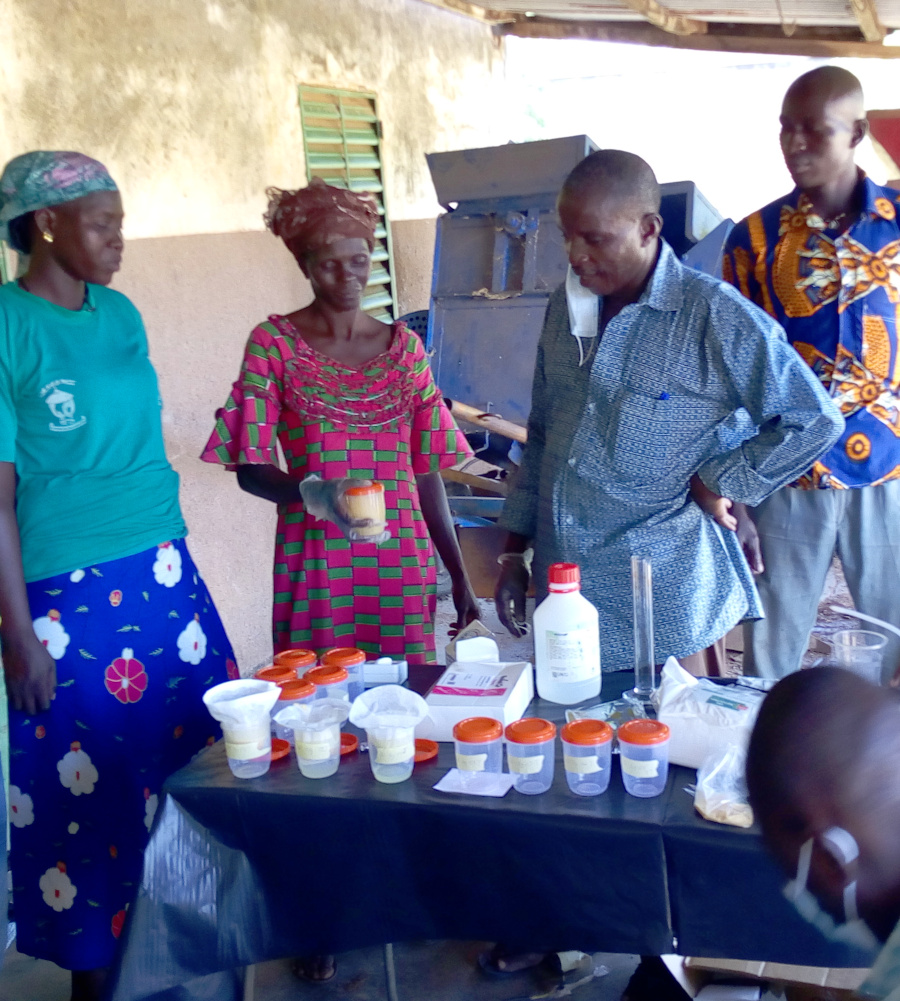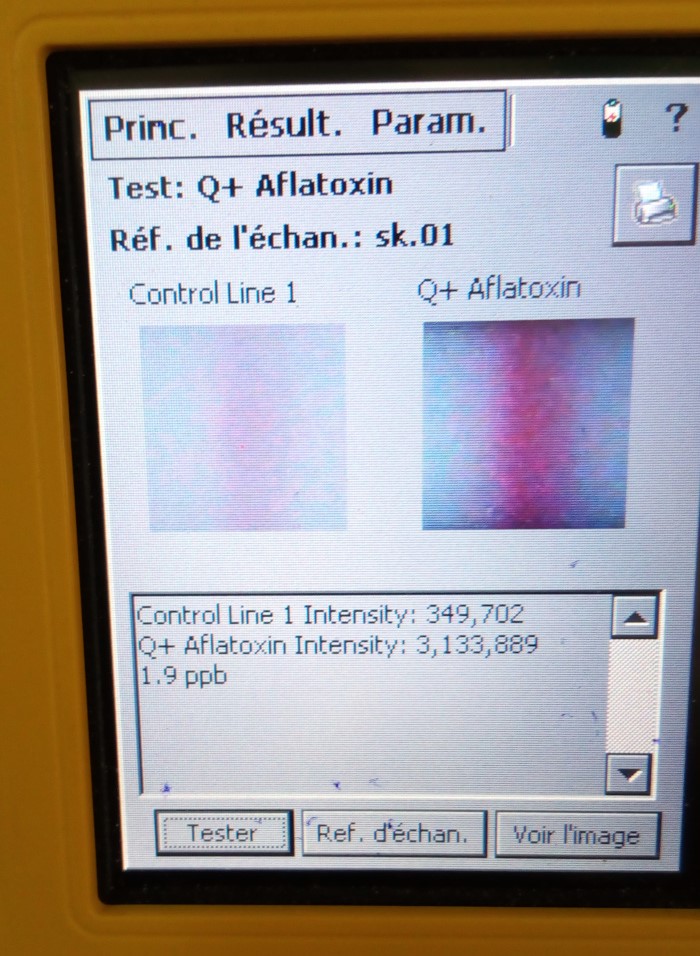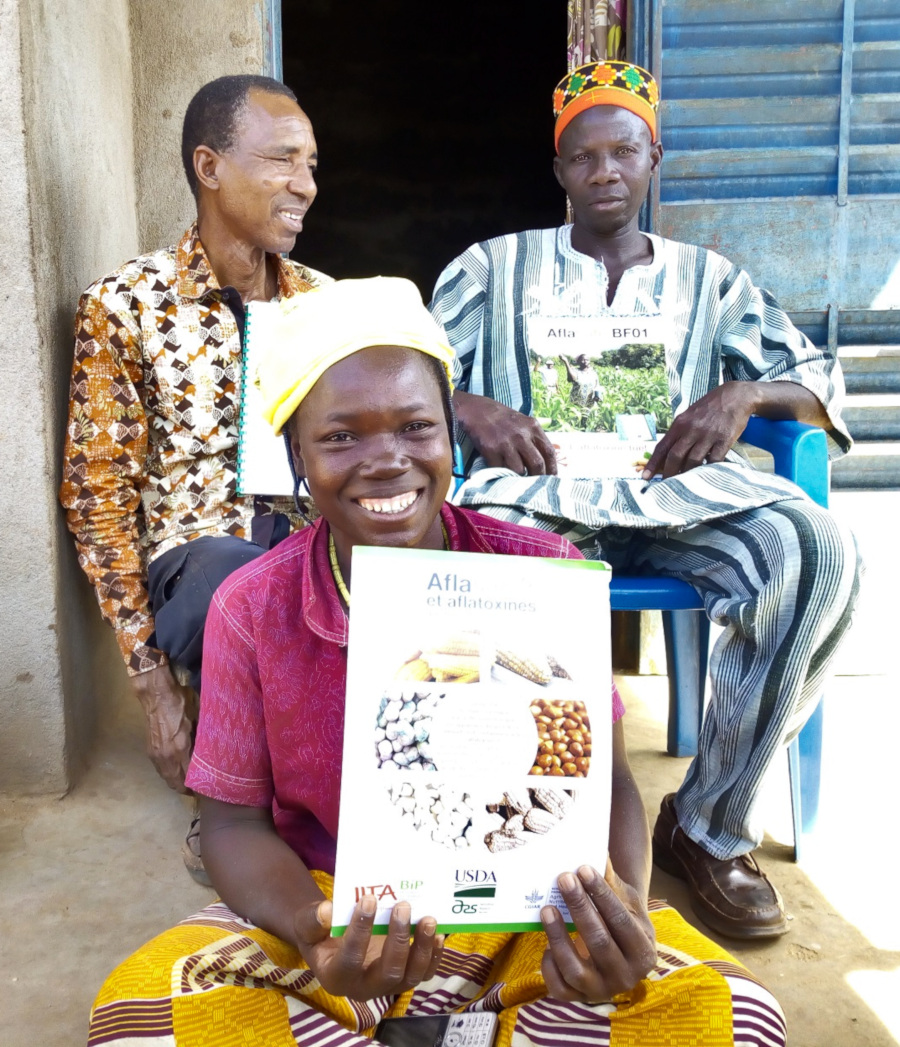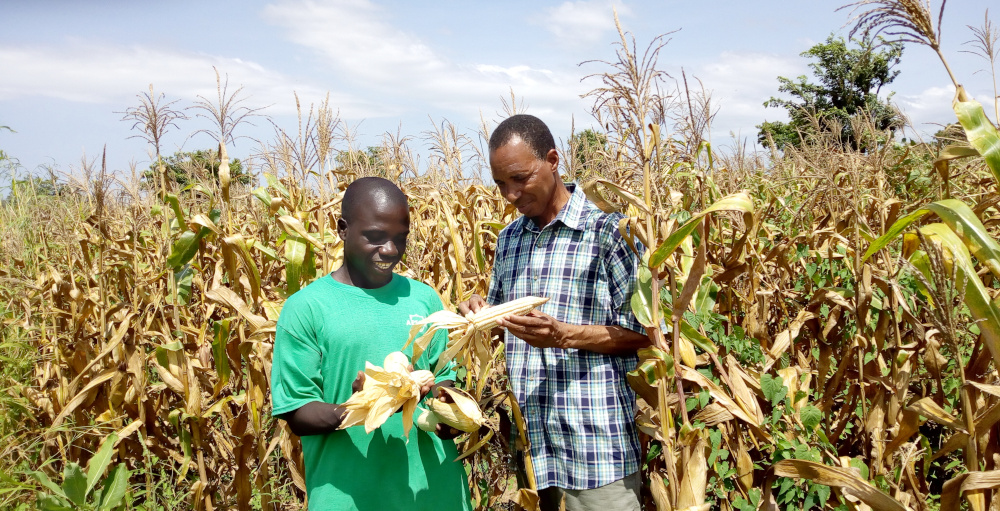
Aflatoxin is a slow and hidden killer, so to stop it in its tracks we need more than just a top-notch product. Aflasafe BF01 is a leader in its field – but it needs leaders in the field to become its champions. We have been supporting ongoing demonstrations and training days in farmers’ fields, with live, participatory aflatoxin testing to prove Aflasafe’s effectiveness in making food safe, whilst continuing to explore as many more options as possible to further spread the word. We were overjoyed in November 2018 to receive a royal audience with not one but two Burkinabe Kings, and to receive their pledges of support as ambassadors for Aflasafe and aflatoxin awareness.
The monarchs in our history books and news headlines often feel like lofty figures, far removed from the concerns of ordinary people. But, in Burkina Faso, one man can both wear the crown and have his feet firmly rooted on the ground. In this nation with agriculture at its heart, Kings are proud to own farms and are closely in touch with the challenges facing their people.
Kings – and queens – in Burkina Faso are leaders of their communities. They both represent and guide their people, and play a key role in shaping local attitudes, ideas and priorities. As such, they are some of the key opinion leaders who potentially have the greatest power in spreading awareness and encouraging adoption of Aflasafe.
“This problem affects everybody. We will support the team working on aflatoxin issues in Burkina to sensitise people and to push the adoption of Aflasafe by farmers in my region,” —His Majesty Pô Pê, the King of Pô

So how have we been fortunate enough to speak with such royal personages? By going straight to the top? In fact quite the opposite: the meetings were a consequence of long-term, diligent spadework on the ground. Earlier in 2018, ATTC worked with Groupe Eléphant Vert, our Aflasafe BF01 distribution partner, to set up 10 participatory, farmer-managed demonstration sites across seven provinces. At each demonstration we are collaborating with farmers who are organised into pre-existing agribusiness clusters – some working together through farmer organisations, others to supply food processors or agro-dealers who buy grain in bulk – helping us reach them efficiently and creating natural Aflasafe support groups embedded in local communities.

Demonstrations like these let farmers see Aflasafe BF01 in action for themselves and participate in testing its effectiveness, as well as being the perfect place for practical training and experience in applying Aflasafe correctly. In these demonstrations, we’re not only cultivating crops, but also providing the right soil for pioneering farmers, farmer groups and other local opinion leaders to grow into Aflasafe champions, fortified with awareness of aflatoxin and knowledge of how to tackle it.
The show-and-tell continues: as part of our ongoing backstopping for Aflasafe BF01, we have been providing support and monitoring of the demonstrations. Aflatoxin contamination is invisible, and leaves no taste, smell or other evidence behind: the most-delicious looking food can be dangerous, while even the mouldiest could be safe to eat. So even though the proof of the pudding, as they say, is in the eating, we need a little help to get the proof we need: scientific testing is the only way to detect aflatoxin. This makes sampling harvests and testing them for aflatoxin an important part of the demonstration process, giving farmers – and others such as extension officers, buyers and agro-dealers – convincing and conclusive evidence of Aflasafe’s effectiveness under real-world conditions in their own fields.

During October to November 2018 it was therefore time for return visits to the demonstration sites, and for a series of further field days. At these, we worked with farmers to collect maize and groundnut samples from Aflasafe-treated and untreated plots, so that they could be compared in on-the-spot tests. The participants heard about how aflatoxin testing works and tried their hands at the different stages of the testing process, as well as learning about the varying safe limits permitted within Burkina Faso and in different foreign markets, and how contamination affects their own health, poultry and livestock production, and trade opportunities. The field days were also the perfect opportunity for training on good harvest practices and safe storage.
So how did Aflasafe BF01 perform in real-world conditions? The preliminary field results were exemplary: aflatoxin levels in all the Aflasafe-treated samples were between 0 and 5 parts per billion (ppb). In other words, with such low contamination levels, all the treated maize and groundnuts were safe to eat. In contrast, aflatoxin in the untreated grain could reach dangerous levels – up to 136 ppb in maize and 194 ppb in groundnuts, making it unsafe to eat and difficult to export or sell to premium markets. In 2019, we will be following up with more precise laboratory testing to confirm the results.

Aflatoxin is not a problem to be underestimated in Burkina Faso – as in many other African countries, contamination is widespread in foods like maize and groundnuts, the staples that people eat every day. Aflatoxin even gets into baby food: 84% of cereal-based infant formula produced in Burkina Faso has been found to contain aflatoxin B1 (the most toxic type). The worst had 900 times more than the safety limit – which is very low for these foods, since babies are so vulnerable to the toxin.
Kings commit to Aflasafe to keep their people healthy
We were delighted to learn that at two of our demonstrations, at Pô and Bouèga (near the city of Garango), our activities had piqued the interest of the local Kings. Representing the ATTC team was Dr Adama Neya, Plant Pathologist at Burkina Faso’s Institut de l’Environnement et de Recherches Agricoles (INERA), who helped develop Aflasafe BF01 and is co-leading commercialisation in Burkina Faso. During the course of his field visits, he was privileged to be offered audience with the King of Pô, His Majesty Pô Pê, on 13th November 2018, and with the King of Bouèga, His Majesty Belem Comba, just a couple of days later on 15th November.

Both Kings were very interested in learning about aflatoxin and Aflasafe, and expanding their own direct understanding of the issues. Once they had heard more, both were keen to act as awareness ambassadors – not only promoting Aflasafe use among the farmers in their communities, but also advocating Aflasafe’s cause to industry and government. We are honoured to count on their weighty voices in our cause, and excited to see how their influence and clout will help drive demand for Aflasafe.
The King of Pô was particularly attracted by the health benefits of using Aflasafe. Leading by example, he said that he himself would be applying Aflasafe BF01 in his own plot, and would be encouraging his people to do the same – not only because they can sell at a better price but because they must feed their families with safe food.
“Our life is in danger with these contaminated foods,” he said. “I have heard about the cancers; with these diseases we can’t have 80 years of life. Our government must provide support to protect the health of the population.”
With such distinguished high-level support behind us, and a growing number of champions flourishing on the ground in Burkina Faso, the future continues to look bright for Aflasafe BF01. As 2019 unfolds, we will continue to leave no stone unturned in our quest to raise awareness, and in particular to work harder on business-to-business marketing of Aflasafe BF01, targeting influencers in the food and agribusiness industries to ensure substantial and sustainable demand into the future.
LINKS
- More photos of sampling, aflatoxin testing, and our brushes with royalty
- Previous news items from us:
- Market-testing in Burkina Faso exploring Aflasafe BF01 commercialisation
- Marketing Aflasafe BF01 in Burkina Faso – Big plans from a big name
- Bright aflatoxin-safe days ahead as Aflasafe BF01 is launched in Burkina Faso
- What next after Aflasafe BF01 registration? Aflasafe means business in Burkina Faso
- Keep up with the latest on Aflasafe in Burkina Faso











